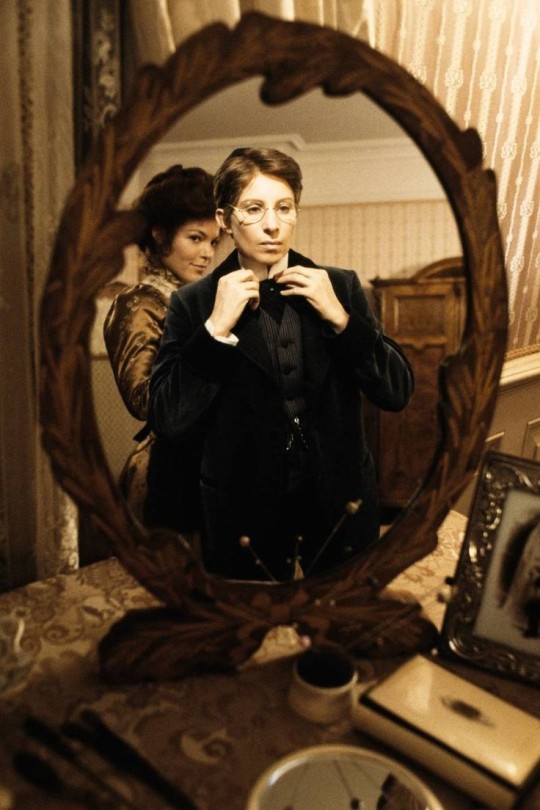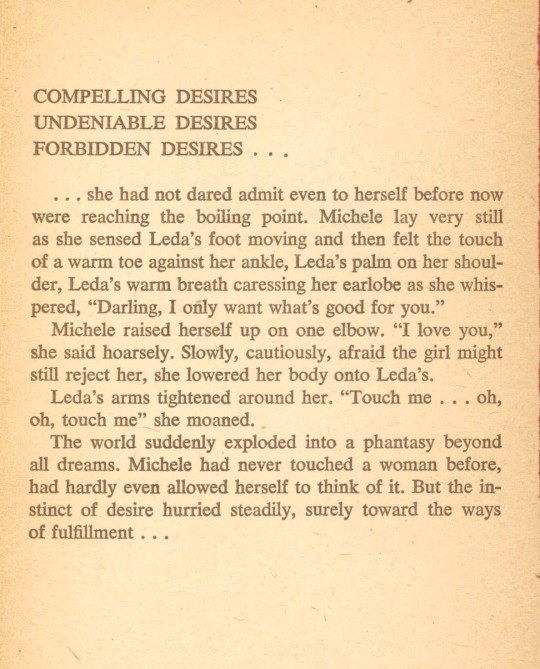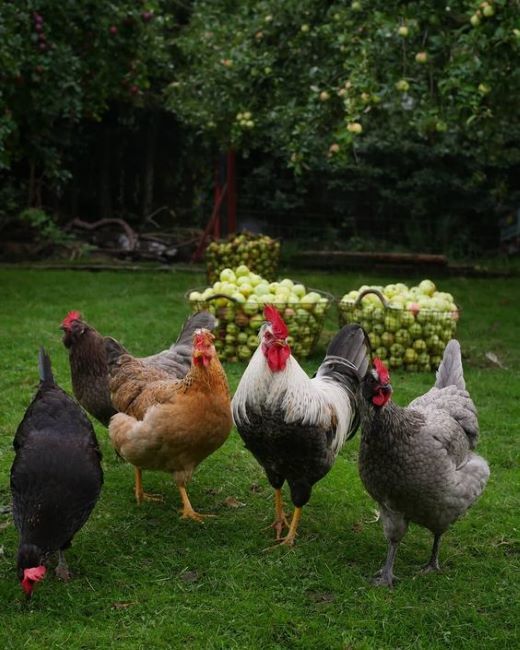#isaac singer
Text

“I did not become a vegetarian for my health, I did it for the health of the chickens.”
― Isaac Singer
110 notes
·
View notes
Text
[…] the 1850s was notable for three other important, fashion-related innovations.
The first was the sewing machine.
Widely considered to be a Victorian era invention, the sewing machine was, in fact, a distant descendant of a mid-eighteenth century embroidery machine invented by Charles Frederick Weisenthal. Sewing machines would continue to appear in some form or another well into the early nineteenth century, but it was not until the Victorian era that the sewing machine as we know it today began to emerge on the scene. Originally patented by American inventors Elias Howe in 1846 and Isaac Singer in 1851, the modern sewing machine was, first and foremost, an industrial tool. It was used primarily in factories, tailors’ shops, and dressmaking establishments. But though it accelerated the speed of their work, the arrival of the sewing machine did little to improve the lot of poor working seamstresses. Instead, it led to mass production of clothing in factories where the working conditions were often quite grim – and sometimes even fatal.
In 1856, Singer introduced the first sewing machine for domestic use. It was an extraordinarily useful tool for ladies, many of whom used it not only for household sewing, but also for making their own clothing. Able to stitch one yard per minute in its earliest incarnation, it greatly sped up the process of sewing straight seams and was – as author Ella Rodman Church states in her 1882 book The Home Needle – a ‘valuable aid in lightening the sewing of a household’.
The second fashion-related innovation of the 1850s was the paper dress pattern. The first paper pattern offered to the public came in the August 1850 edition of the World of Fashion. Soon other lady’s magazines, in both Britain and the United States, began to follow suit, offering their readers patterns for dresses, skirts, bodices, and sleeves. When coupled with the invention of the sewing machine, the paper pattern allowed women to make the latest styles for themselves at a much lower price than that charged by a fashionable dressmaker or modiste.
Another significant fashion innovation of the decade was the discovery and subsequent utilization of aniline dyes. The first aniline dye, known as mauveine or aniline violet, was discovered by William Henry Perkin in 1856. Made from a distillation of coal-tar, it produced a brilliant purple colour which could be used to dye fabric. Perkin patented mauveine in 1858. More colours followed and, soon, women of every class were able to purchase gowns in bright reds, blues, yellows, and purples. Unlike the soft, faded colours produced by natural dyes—which were derived from plants, animals, and minerals—aniline dyes produced colours that were rich, vibrant, and of infinite variation.
#book : victorian lady guide#fashion#technology#1850s#19th century#victorian era#england#sewing#william henry perkin#medias#Charles Frederick Weisenthal#18th century#Elias Howe#isaac singer#1840s#Ella Rodman Church#1880s
8 notes
·
View notes
Text
“Yentl—you have the soul of a man.”
“So why was I born a woman?”
“Even Heaven makes mistakes.”

Yentl, the Yeshiva Boy by Isaac Bashevis Singer
#jumblr#jewish#jews#nesyapost#judaism#jewish culture#jewish reading#Jewish books#yiddish#yentl the yeshiva boy#yentl#isaac bashevis singer#transgender
2K notes
·
View notes
Text


@linaluvsbooks on instagram
#linaluvsbooks#books#the secret history#donna tartt#mona awad#all's well#isaac bashevis singer#the pentent#mieko kawakami#breasts and eggs#elif batuman#the idiot#just kids#patti smith#if we were villains#m. l. rio
836 notes
·
View notes
Text
So... have I mentioned I'm about to release a 450,000-word Jewish historical fantasy interactive fiction game?
Here's an interview I did with my publisher, Choice of Games, about it.
#ghost#golem#interactive fiction#historical fantasy#jewish history#judaism#jewish culture#jumblr#late 19th century#1880s#russian empire#magic#klezmers#sexy anarchist klezmers#talmudic debates#shtetl slapstick#isaac bashevis singer vibes#sholom aleichem vibes#I. L. Peretz vibes#choice of games#benjamin rosenbaum#save your shtetl#or not#450#writing life
186 notes
·
View notes
Text










X-Men: Apocalypse (2016)
#X Men#filmedit#Michael Fassbender#Oscar Isaac#Sophie Turner#Tye Sheridan#Lucas Till#James McAvoy#Nicholas Hoult#Olivia Munn#Ben Hardy#Alexandra Shipp#Bryan Singer#my gifs#movie gifs
382 notes
·
View notes
Text
"I still say to myself that there isn't and there cannot be a justification either for the pain of the famished wolf or that of the wounded sheep."
from "The Penitent," by Isaac Bashevis Singer
141 notes
·
View notes
Text

Isaac Hayes - Joy (1973)
97 notes
·
View notes
Text





Steamy Saturday
The world suddenly exploded into a fantasy beyond all dreams. Michele had never touched a woman before, had hardly even allowed herself to think of it. But the instinct of desire hurried steadily, surely, toward the ways of fulfillment.
No more jealousy. No questions. No distrust. She would do anything for Leda, anything that would keep Leda loving her, would keep Leda's sweet body beside her in the night . . . .
Oh, yes, quite steamy! Right down to the provocative cover art by prolific pulp-cover illustrator (Isaac) Paul Rader (1906-1986). This week we bring you another lesbian pulp romance, The Jealous and the Free, by March Hastings, one of the pseudonyms used by lesbian romance fiction author Sally Singer (b. 1930), published in New York by Midwood Tower in 1961.
The story revolves around long-time roommates Michele and Leda who fall for each other; Michele the newbie, and Leda the more experienced. Michele's jealousy, however, drives them apart, and Michele seeks refuge in the arms of the older and wealthy Corrine. But, as you might imagine, Michele still longs for Leda, however . . . can she find her way back to her?
Spoiler! Well, of course she can, silly! And, "She would never leave the girl again. Never. 'The coffee's boiling,' Leda said against her ear. 'Let it,' Michele said." However, half a decade earlier, it wouldn't have been silly for the average reader to expect that such a relationship would end in disaster, and that Michele would only find solace in the man she left behind. Although Singer, who was one of the few lesbian pulp authors who lived openly as a lesbian nearly her entire life, did write such dire endings in her early career, by the late 1950s most of her lesbian romances would end with positive resolutions of fully-realized lesbian love, more realistically reflecting Singer's own lived experience.
Both Singer and illustrator Paul Rader were mainstays of the Midwood Books line of Tower Publications romance novels, which specialized in lesbian pulp fiction.
View another lesbian romance by March Hastings.
View other pulp fiction posts.
#Steamy Saturday#pulp fiction#romance fiction#romance novels#lesbian romance novels#lesbian pulp fiction#The Jealous and the Free#March Hastings#Sally Singer#Paul Rader#Isaac Paul Rader#Midwood Books#Tower Publications#Midwood-Tower#lesbians#homosexuality#LGBTQ+#UWM LGBT Collection
155 notes
·
View notes
Text

17 notes
·
View notes
Text
⚠️Vote for whomever YOU DO NOT KNOW⚠️‼️


#ultimate obscure blorbo#polls#round 5#Yuuki (Tobaku Haouden Zero)#Zissa (Two by Isaac Bashevis Singer)
27 notes
·
View notes
Text

"I did not become a vegetarian for my health,
I did it for the health of the chickens."
Isaac Bashevis Singer
66 notes
·
View notes
Text

Oscar Isaac Art by me
#oscar isaac#star wars#star wars sequel trilogy#moon knight#dune movie#poe dameron#spiderman 2099#singer#actor#oscar isaac fanart
25 notes
·
View notes
Text
"They wanted to be kind to God and not to man; but what did God need of man and his favors? What does a father want from his children but that they should not do injustice to each other?"
The Slave by Isaac Bashevis Singer
#jumblr#jewish#jews#nesyapost#judaism#jewish history#jewish culture#jewish reading#jewish books#isaac bashevis singer#the slave#yiddish books#quotes
91 notes
·
View notes
Text
In all my writing I tell the story of my life, over and over again.
– Isaac Bashevis Singer
21 notes
·
View notes
Text
Two days left for the introductory sale of The Ghost and the Golem, my 480,000-word Jewish historical fantasy game!
(I've been saying 450,000 words, but I just went & recounted. It's now a full novella-length longer than the Lord of the Rings trilogy.)

#it's like really long#the ghost and the golem#tevye fanfic#well really it's isaac bashevis singer meets sholom aleichem meets i. l. peretz meets the talmud meets czarist russia social history fanfic#speaking of fanfic the original bruria didn't deserve that ending#fuck you rashi#no but seriously it's really long
161 notes
·
View notes